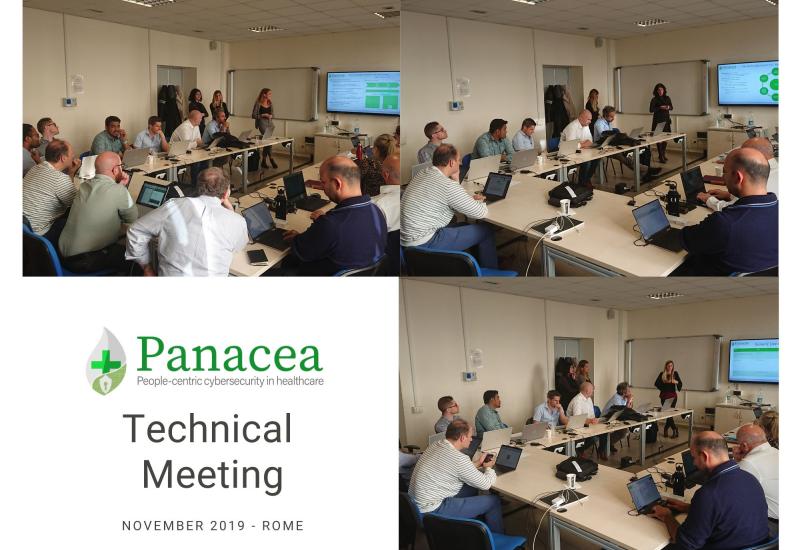PANACEA Research 1st Technical Meeting in Rome @ Università degli Studi di Roma "La Sapienza"

Almost one year into the PANACEA Research Project (January 2019), the consortium partners behind the technology innovations met in Rome on 7-8 of November to discuss the advances in some specific work packages of the project.
First on the agenda, Matteo Merialdo from RHEA gave a recap on user and demonstration scenarios. These are the critical scenarios involving specific processes, devices and applications, specific to the PANACEA Research Use Cases, and the related cybersecurity measures being investigated and developed for each scenario.
Dr Dawn Branley-Bell & Prof Lynne Coventry (Northumbria University of Newcastle) shared their updates on behaviour nudging. They have collected inputs from each Use Case to define a set of common drivers of unsecure behaviour, which fall under one of these categories: norm, attitude, lack of risk perception and awareness, salience, environment, lack of enforcement.
PANACEA Research values diversity amongst its partners. This was reflected in the number of women at the meeting, not only Prof Lynne Coventry, but also Federica Foti and Martina Bossini Baroggi (representing RINA-C together with Ivan Tesfai), and Raffaella Condoleo from RHEA. In the picture, you can see these three women presenting the Security-by-design framework (SbDF) and the Secure Design Support Platform (SDSP).
These tools are thought to overcome the design limitations of medical devices, which currently lack the security-by-design, critical for mitigating cyber risks.
IDEMIA's presentation with Aghiles Adjaz focused on the IMP (Identity Management Platform) and the Device authentication, followed by Peter Hagstrom (RHEA) presenting the Secure Information Sharing Platform (SISP), the goal of which is to enable healthcare professionals to coordinate and share information almost in real time and in a secure way.
The discussion of the most technical aspects and the Software Development Plan closed Day 1 of the technical meeting.
Day 2 was dedicated to DRMP (Dynamic Risk Management Platform) and to Research Challenges with presentations from Fabrizio de Vecchis (RHEA) and again RINA-C with Federica Foti, Martina Bossini Baroggi and Ivan Tesfai, Silvia Bonomi and Simone Lenti (UNIROME) and Emmanouil Spanakis (FORTH).
The next internal project meeting will be the general assembly, where all the consortium partners will participate and share their takeaways of the first year of PANACEA Research.
